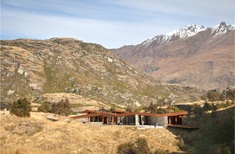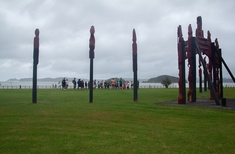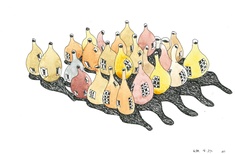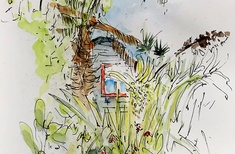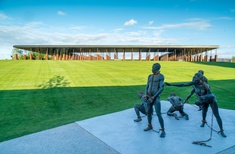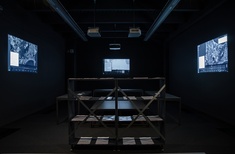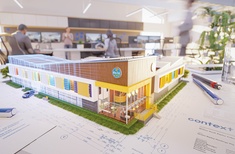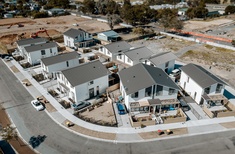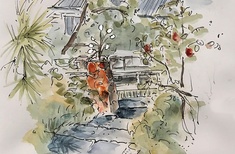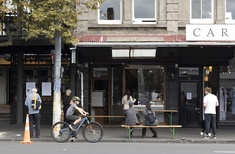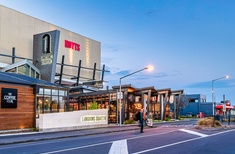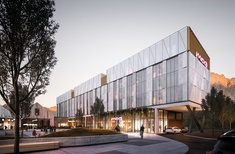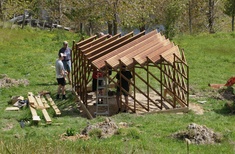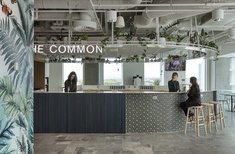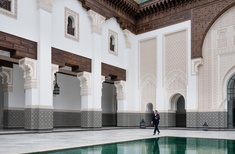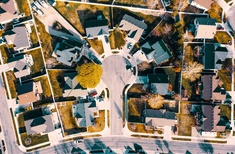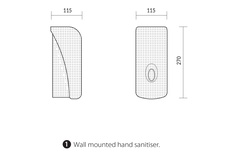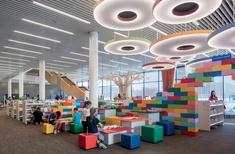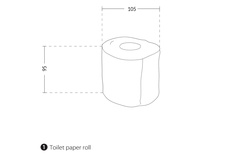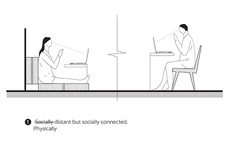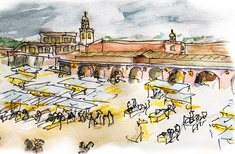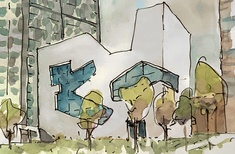Practice
RSS“This is not the time for a pep-talk – we have had 30 years of those…” Abigail Hurst explores what it takes for architects to get real about the climate crisis.
In the first of a new column that aims to amplify minority voices, Jade Kake and Desna Whaanga-Schollum discuss how Te Tiriti underpins indigenous approaches to design.
Craig Moller reflects on his architectural drawing practice and finds a focus on how he draws, rather than what or why he draws.
Pip Cheshire: “We have a choice as a profession…shall we seize the day and use this time of upheaval to speak out and be agents of change?”
Ken Davis makes a plea for the retention of the Wellington Public Library and Civic Centre on which he worked as a project architect from 1987 to 1992.
Lynda Simmons: “Print media has always defined the way we store architectural as well as art histories, whether via books, academic journals, magazines, newspapers or personal letters.”
“If architecture is to play a part in this transformation [of problematic public monuments], it’s also necessary to build anew, rather than just demolish.”
In light of this exhibition that maps violent events in Aotearoa, these two architectural academics discuss the links between the built environment, violence and legislation.
Context Architects explore new technologies to communicate design and reflect on today’s changing client expectations and the need to be transparent and collaborate in real-time.
Peddlethorp’s Manuel Diaz explores the changing face of state housing in New Zealand and reflects on the firm’s work on recent community housing projects.
How much is the anti-plastic revolution changing the supermarket? Explore what package-free stores are doing well and what they can teach the food industry.
The newly-established Urban Development Institute of New Zealand (UDINZ) outlines forces in a post-COVID New Zealand that they believe will fundamentally change our urban centres.
Julia Gessler explores how sleeping pods are becoming a growing trend both on and off the ground.
In the sixth installment of our series, founder of Hong Kong’s studio AFSO André Fu, talks about blending the residential and hotel typologies.
Jan Smitheram surveys the meaning of success and shows how pluralistic notions offer a way to unpack the traditional meanings, but with a cautionary twist.
Pip Cheshire: “It’s been a rude shock that our stock in trade, the bricks and mortar realisation of our lofty dreams, is of no value when the unseen hand of disease strikes.”
Whether you are in the market for an avant-garde, open-house-style hotel or a reliable five-star chain, Melanie McDaid gives us a global forecast for hotels in 2020.
Lynda Simmons on addressing climate change: “Change proved to be simple: just stop. Just stop doing the thing that causes harm.”
Part four brings us a developer focus where we speak to John Chow, director of Stonewood Group who has a growing interest in hotels across New Zealand.
“Of the many insights COVID-19 brings, the realisation that our economy is built as a house of cards is one of the more sobering.”
As the market for retail evolves, how will the design and build of brick and mortar institutions change to meet new demands?
Ignite’s Audrey de Filippis discusses distinctive storytelling through design and the evolution of the lifestyle brand in the third part of our series.
Professor Andrew Barrie discusses design-and-build using computer numerical control (CNC) machinery in a range of projects by his students.
Interior and workplace specialist at Warren and Mahoney, Scott Compton, muses: Is this the start of the workplace as we should want it to be?
Director of interior design powerhouse Space Studio, Vee Kessner, reports on the synergy of design and procurement in a changing industry.
The local hotel industry is in a state of significant change. This six-part series explores what this might mean for the world of interiors and what might its future look like.
This Warren and Mahoney principal notices how many houses on his street have not evolved with society’s changing dynamics.
The fourth in our series brings us a spark of light in the fight against COVID-19 using desktop 3D printers and asks what decentralised manufacturing could mean for our collective future.
The third in this series by designer Raimana Jones uses dimensioned drawings and diagrams to give some perspective to pandemic-related sanitising.
In this excerpt from the second volume of the Radical Futures series, Public Knowledge, Barnaby Bennett explores the ability of physical spaces to make publics manifest.
In this series, designer Raimana Jones uses dimensioned drawings and diagrams to give some perspective (and some humour) to COVID-19-related behaviour.
Designer Raimana Jones uses dimensioned drawings and diagrams to give some perspective (and some humour) to the latest info about COVID-19.
Kiwi architect Jeremy Smith reports from the Indian Institute of Architects’ National Awards for Excellence in Architecture 2019.
Experienced architect and practice leader Richard Harris shares his thoughts on weathering economic hardship.
Senior economist Brad Olsen of Infometrics discusses how a country-wide shut down might affect the economy in the long run.
The ongoing coronavirus is an example of the close relationships between urban development and new or re-emerging infectious diseases.
This Victoria University researcher compares how practising architects, students and academics experience time and finds that it is understood variously.
In this new column, architect Audrey de Filippis discusses how the industry can approach design with social responsibility. This month she learns lessons on adaptability from Marrakesh.
Pip Cheshire notes, “…we architects have a duty, at the very least, to treat our building users with humanity, respect and civility.”
Lynda Simmons believes discussions on academia are important to remind the industry “that universities are more than technical schools producing workers for industry”.

